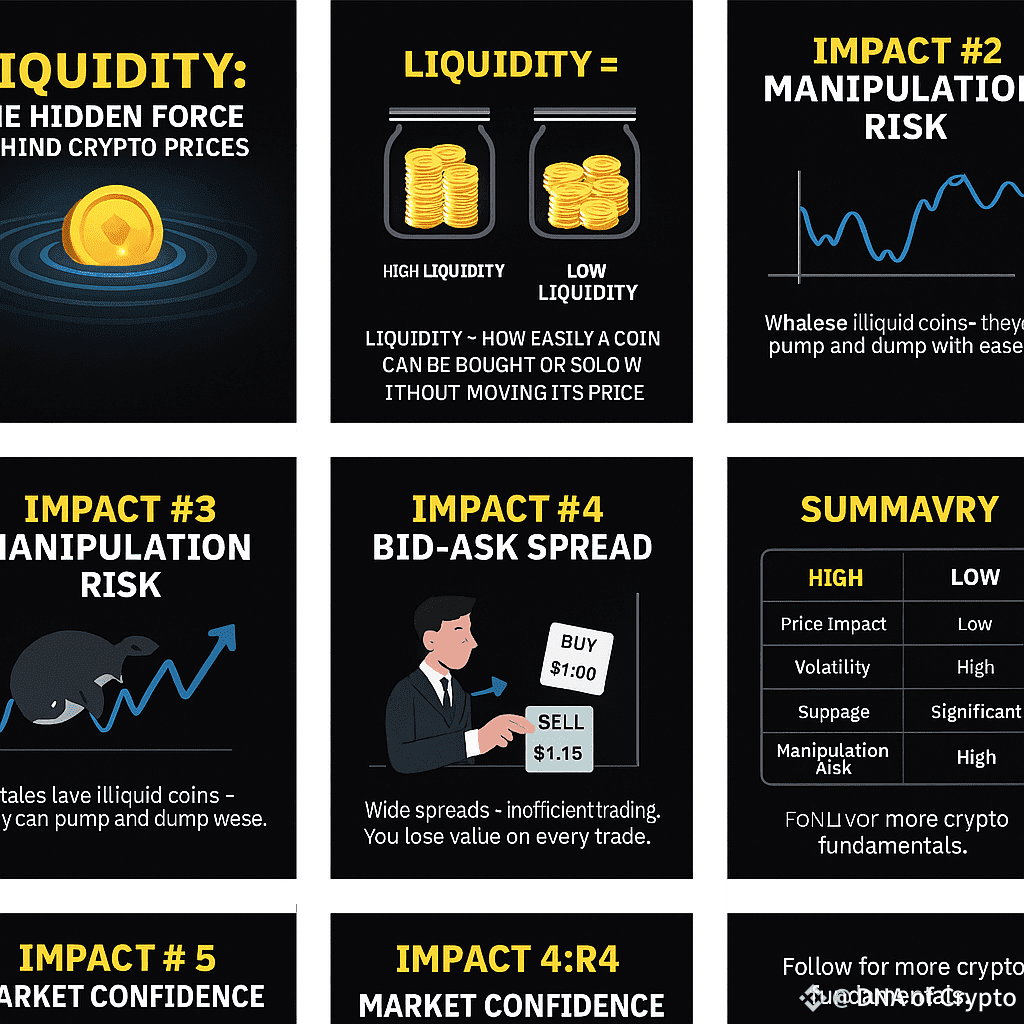🧠 What Is Liquidity?
In simple terms:
High liquidity means there are lots of buyers and sellers, and trades happen quickly at stable prices.
Low liquidity means fewer participants, slower trades, and more volatile prices.
🔍 Types of Liquidity
1. Market Liquidity
Refers to how easily a crypto asset can be traded on exchanges.
Influenced by trading volume, number of active traders, and order book depth.
2. Exchange Liquidity
Refers to how liquid the exchange itself is.
A highly liquid exchange has many users and high trading volume across multiple pairs.
3. Token Liquidity (in DeFi)
In decentralized finance (DeFi), liquidity refers to the amount of tokens locked in liquidity pools.
These pools enable automated trading via smart contracts (e.g., Uniswap, PancakeSwap).
📊 Example: Comparing Liquidity
Let’s say you want to sell 1,000 units of Token A.
Scenario 1: High Liquidity
Token A is listed on Binance with high trading volume.
You place a sell order, and it gets filled instantly at the market price.
Price impact: Minimal.
Slippage: Very low.
Scenario 2: Low Liquidity
Token A is only listed on a small exchange with low volume.
You place a sell order, but only 200 units get filled at the current price.
The rest gets filled at lower prices as buyers are scarce.
Price impact: High.
Slippage: Significant.
💡 Why Liquidity Matters
Benefit of High LiquidityExplanation
✅ Price StabilityLess prone to wild price swings
✅ Faster ExecutionOrders are filled quickly
✅ Lower SlippageYou get the expected price
✅ Easier Entry/ExitYou can trade large amounts without issues
✅ More TrustLiquid markets attract serious investor
🧪 Real-World Crypto Example
Bitcoin (BTC) has high liquidity. You can trade millions of dollars worth of BTC on major exchanges like Binance or Coinbase with minimal price impact.
A small altcoin with low volume might have poor liquidity. Trying to sell even a few thousand dollars worth could crash its price temporarily.
💥 How Liquidity Impacts Coin Prices
1. Price Volatility
Low liquidity = high volatility.
When few people are trading a coin, even small buy or sell orders can cause big price swings.
Example: If someone sells $10,000 worth of a low-liquidity token, it might drop 20% instantly.
2. Price Manipulation Risk
Illiquid markets are easier to manipulate.
A whale (large holder) can pump or dump the price by placing large orders.
This creates false signals for retail traders.
3. Slippage
Slippage is the difference between the expected price and the actual executed price.
In low liquidity, slippage is high—especially for large orders.
Traders may end up buying higher or selling lower than intended.
4. Spread Between Bid and Ask
In liquid markets, the bid-ask spread is tight (e.g., $1.00 buy / $1.01 sell).
In illiquid markets, the spread widens (e.g., $1.00 buy / $1.20 sell).
This makes trading inefficient and costly.
5. Market Confidence
High liquidity signals trust and stability.
Investors are more likely to enter a market where they can easily exit.
Low liquidity can scare off institutional players and serious traders.
📉 Real Example: Impact on Price
Let’s say Token X has:
Daily volume: $50,000
Liquidity pool: $100,000
Now someone tries to buy $20,000 worth of Token X.
In Low Liquidity:
The buy order eats through the order book or pool.
Price jumps 10–15% due to lack of sellers.
Creates a temporary pump, followed by a dump when they sell.
In High Liquidity:
The same $20,000 order barely moves the price.
Market absorbs it smoothly.
Price remains stable.
